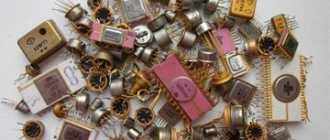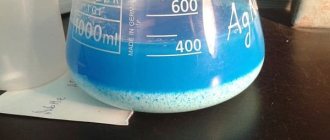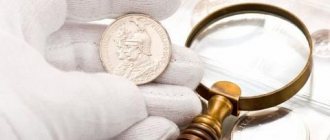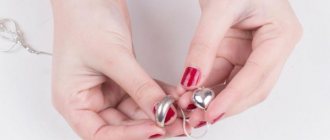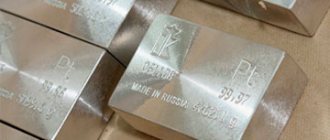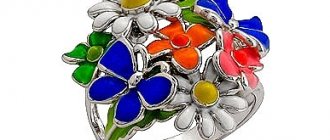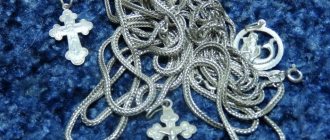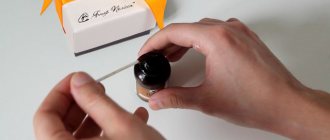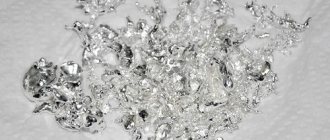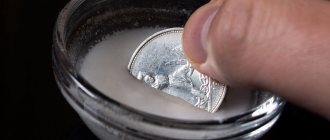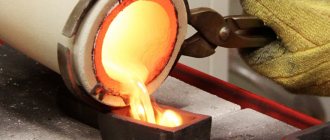July 26, 2020
Many radio components contain precious metals, among which a significant portion of silver can be found. In many of them it is present in the idea of an alloy, and in some it is even present in its pure form. This precious metal is a fairly ductile and malleable material. To extract silver from radio components, you must have the appropriate knowledge and associated containers and tools.
At home, it is highly not recommended to engage in independent silver extraction, since this entails liability before the law. If you have unnecessary old radio components at home, it is better to sell them. You can easily hand over radio components in the Kaluga region. Our purchase offers each client favorable conditions.
Use of silver in electronics. Technical silver in the USSR
Silver conducts electricity and heat better than other metals. It is inert to water, air, and some gases. It is used in a wide variety of industries, the list of which is constantly expanding.
The precious metal is used to create jewelry, in the production of contacts for various electrical products, for minting coins, as a means of investment, in the production of mirrors, clothing, batteries, in the chemical industry, and photography. The volumes of lunar metal attributable to the industrial sector exceed 70% of global production.
Silver alloy wire
During the Soviet era, they did not skimp on silver in the production of radio components. The metal used in this area is called technical. This is a special alloy containing copper, nickel, tin, aluminum, cadmium as impurities. The number of additives is not large, usually does not exceed 0.2% of the total composition. The bulk of it is pure silver.
The exception is magnetic and non-magnetic samples of technical precious metals. Here the silver content varies from 60 to 80%.
If jewelry metal performs a decorative function, then technical metal must provide electrical conductivity and reflection of light.
How to get tin from tin cans?
To remove tin
from waste, namely from
cans
, they should be washed thoroughly, for this it is best to pour a solution of soda and water into the jar, and put the jar on the fire, it is necessary for it to boil and boil well. After this, drain all the contents from the jar and rinse it well with water.
Interesting materials:
How to link a contact to another phone? How to link outlook to phone? How to link work outlook email to phone? How to link an Instagram page to Facebook from your phone? How to link your phone to another Google account? How to link your phone to gmail? How to link your phone to your computer? How to link your phone to gmail? How to link your phone to Windows 10? How to link a troika to your phone to pass through?
List of silver-containing components in electronics
The main sources of silver recyclables for refining are radio and electrical devices. In addition to lunar metal, devices can contain gold, palladium, tantalum, and platinum.
Soviet microcircuits
The largest amount of silver plating is found on microcircuits manufactured before 1990.
If we compare these Soviet parts with others, they are quite promising for refining. The most lunar metal per 1000 units of microcircuits contains:
- 1200ЦЛ2 - about 120 grams;
- 1200TSL1 - about 114 grams;
- 1200M1 - about 90 grams;
- K57ZRF41/42 - about 70 grams;
Technical silver
Electronic machine capacitors
Capacitors can be found inside computing devices, tube televisions, tape recorders, and telephone exchanges.
A significant amount of precious metal per 1000 units of parts contain:
- ETO-4 600*10 - 14163.6999 grams;
- ETO-4 - 8345.16 grams;
- ETO-3 400*2 - 2450 grams;
- ETO-3 - 1655.07 grams;
The cost of one capacitor varies from 50 to 5000 rubles.
Radio resistors
The most valued are variable resistors whose copper terminals are treated with high-grade silver.
The prevailing amount of precious metal per 1000 units contains:
- UN-100 – 207 grams;
- UNU50 – 132 grams;
- UN 25 – 67 grams;
Resistors are among the most widely used elements in electronics.
Domestic and imported connectors
Connecting elements are used to temporarily connect electrical conductors using mechanical contact.
Imported connectors are less preferable for refining, since they are three times inferior in precious metal content to Soviet ones.
A lot of lunar metal can be obtained from connectors: RG1N-2–31 RG90–5 (socket) RMG-39B45Sh2A1 RG1N-2–23 RG1N-2–29.
Transistors
A transistor is a radio-electronic component made of semiconductor material used to amplify, generate, switch, and convert an electrical signal.
Which radio components contain precious metals, and where should you not look for them?
Gold, silver, platinum and palladium conduct electric current better than many other metals, so parts of some radio elements are made from them. Valuable metals are present in small quantities in the filling of televisions, printed circuit board elements or display parts. Most precious metals are contained in old-style Soviet and imported electronics. Over time, manufacturers began to replace them with other materials, so there are practically no valuable metals in new electronics.
Examples of radio and electrical components containing valuable impurities:
- capacitors in old-style TVs (red, green K225, gray tubular, yellow K3111) - contain silver;
- round and barrel-shaped black, orange KT315 transistors, K174 microcircuits - contain gold;
- green capacitors KM - contain platinum and palladium;
- potentiometers PPMF, PLP, PTP, PPLM;
- microcircuits K174, 134, 155, 142, 530, etc.;
- connectors and switches with yellowish gold plating;
- resistors SP5, SP3, PP3;
- lamps for generators.
Chemical properties of technical silver
The very concept of “technical silver” is used for secondary precious metal obtained by processing equipment, and for material used in technology.
The properties of lunar metal that have contributed to its widespread use are plasticity, high reflectivity, and increased chemical resistance. The metal does not react with oxygen, hydrogen, nitrogen, carbon, or silicon.
Technical silver melts at temperatures from 780 to 962 °C, boils at 2210 °C.
Methods for removing impurities
Nowadays, you can buy chemical reagents on the open market, so refining silver-plated contacts at home will not be difficult .
It is necessary to follow safety precautions and use respiratory, eye and hand protection.
Carry out reactions with good air exchange, with a hood, or even better - outside. When fusing the resulting metal, observe fire safety.
Refining with electrolyte and ammonium nitrate
The method is suitable for those who cannot purchase and use nitric acid.
The meaning of this reaction is the interaction of ammonium nitrate and sulfuric acid located in the electrolyte with increasing temperature . As a result of heating, a stable compound of nitric acid is obtained, which dissolves the technical silver alloy.
To carry out the reaction you will need:
- chemical resistant glassware;
- sulfuric acid based electrolyte;
- ammonium nitrate;
- electric stove;
- sand bath;
- zinc shavings to highlight metallized silver;
- salt;
- hydrochloric acid;
- hot water.
Section question - answer
How to get pure silver from silver contacts?
Expert opinion
Andrey Seleznev
Chemist-technologist, Volgograd
The most preferred method for cleaning contacts is electrolytic refining. It is with its help that you can obtain precious metals of the highest purity. The choice of cleaning method directly depends on the amount of silver recyclables, its condition, and the availability of the necessary equipment.
How to remove silver from starter contacts?
Expert opinion
Zavorotniy Alexey
Service engineer
Nitric acid treatment is most preferable for starters and automatic machines. Technical parts are immersed in dilute acid; the process of dissolving the precious metal can take more than 12 hours. Next, the lunar metal is replaced with copper. This stage lasts up to three days.
How to remove silver from contacts at home?
Expert opinion
Andrey Seleznev
Chemist-technologist, Volgograd
First, the silver contact parts are crushed and treated with nitric acid. Using sodium salt, the solution is cleared of the possible presence of lead, which will become a precipitate. Next, the essence is evaporated to a dry residue, fused with a gas burner, and dissolved again. The work is repeated until pure metal is obtained.
How to separate silver from copper on contacts?
Expert opinion
Zavorotniy Alexey
Service engineer
First, the scrap silver is dissolved using nitric acid. The resulting precipitate must be evaporated to dry material, then fused. The resulting ingot must be dissolved in hydrochloric acid so that the remaining elements precipitate. The residue is removed by filtration, calcined, and dissolved again. The procedure is carried out repeatedly.
Treatment with nitric acid and copper
For this process, you need to mix 8% acid with distilled water in a 1:1 ratio. The amount of this solution is prepared at the rate of 1 liter per 50 g of silver. Next, silver is dissolved in this liquid. After the silver is completely dissolved, copper is added to the solution in the form of copper tubes to obtain the so-called “silver cement”.
This process is that copper, reacting, collects silver on its surface. This will be the “silver cement”, which must be periodically shaken off the tubes so that the reaction does not slow down. Once the reaction is complete, the silver cement will settle at the bottom. Next, all that remains is to filter the solution through coffee filters and evaporate the filtered substance, after which the dry silver powder is fused using a gas burner.
Sales of production
Do not forget that activities for processing scrap and waste of precious metals are subject to licensing in accordance with the legislation of the Russian Federation.
Individual entrepreneurs and legal entities have the right to buy and process the remains of precious metals if they have a certificate from the Assay Office.
If you try to sell metal that you yourself obtained from radio components to buyers, you should find out about criminal liability for illegal mining and sales.
Violations are regulated by Article 15.44 of the Code of Administrative Offenses, which states: the amount of the fine will be one or one and a half times the cost of the materials that are the subject of the offense.
Cost of various samples
The cost of any sample depends on the price of pure precious metal established by the Central Bank of the Russian Federation. To determine the current cost of the sample, you need to multiply the current price of the highest alloy by the required coefficient.
Current sample costs for 2022:
| Try | Cost per gram, rub. |
| 999 | 37 |
| 960 | 35,5 |
| 925 | 34 |
| 875 | 32 |
| 830 | 30 |
Silver from radio components usually has 999, 960, 875 standards.
Sales points
Buyers should be looked for on thematic forums and websites, among private advertisements. Pawn shops and purchases accept such metal several times cheaper than its real value.
If there is no license permitting the extraction of precious metal from recycled materials, you can try to make simple jewelry yourself from the resulting silver.
Grandma's tips
In jewelry, metal is not used in its original, pure form (the same applies to the production of cutlery). Other components are added to the alloy, which give additional strength. The classic option here is copper. To distinguish real silver from a fake, you need to talk not about Ag as such, but about the percentage of its content in the alloy.
of people living today were able to determine the purity of metal without any drugs or devices
- Argentum is very thermally conductive - it heats up quickly and cools down quickly. If you hold it in your fist, it will immediately acquire body temperature. You can put it in boiling water (if the decoration does not have stones) and then pick it up. Real metal will burn, but not for long.
- The product can be rubbed in your palms for several minutes. If the skin remains clean, the alloy is good; if dark traces remain, there are excess impurities (most often zinc).
- Silver ringing is not just a stable phrase. When gently tapped, the jewelry rattles; the argentum vibrates lightly and protractedly. The percussion instrument should be something akin to a knitting needle.
- If you place a spoon made of Ag in the sun, it will brightly reflect the rays and shine. A cheap alloy will give a dull glow, or even a barely noticeable one.
- People with a keen sense of smell (and good experience) distinguished silver by smell. They assured that pure metal smelled of freshness and lily of the valley. Now this method is hardly suitable for everyone - modern perfumery will make even iron smell like roses.
- Argentum has a high density. Even a small product made from it should be felt in your hand. And today it is so easy to distinguish silver from much lighter aluminum.
- Previously, the ring was covered with crumbs of rye bread and left there for two days. If the jewelry noticeably turned black during this time, this was a good sign - the alloy was considered to be of high quality. With today's bread this test may not pass.
- You can try to bend the spoon (plate). An object made of normal argentum will yield quite easily and will have almost no spring. But this method will not give a 100% guarantee: you can also bend a steel device. And it will be difficult to return the item to its original appearance.
All these tests were based on knowledge of the properties of Ag. Knowledgeable people could determine the authenticity of the metal by its appearance. This is probably still available to experienced jewelers.
Source
Platinum extraction
Instructions for extracting platinum from raw materials:
- removal of base metals (soak for 10 minutes in a 20% solution of hydrochloric acid heated to 50°C);
- dissolution (fresh hydrochloric acid is added to the filtered metal powder and kept for 12 minutes at a temperature of 80°C, then a solution of nitric acid is added dropwise until the solution turns yellow);
- precipitation (after 12 hours, ammonium chloride solution is gradually added to the reddish solution);
- obtaining a platinum sponge (the resulting mixture is filtered to separate the yellow precipitate of ammonium hexachloroplatinate, which is additionally washed with a urea solution and dried for 2 days in the sun or a radiator, and then calcined to obtain spongy platinum);
- melting of raw materials (the spongy mass is placed in a heat-resistant crucible and heated with a gas burner until melted).
